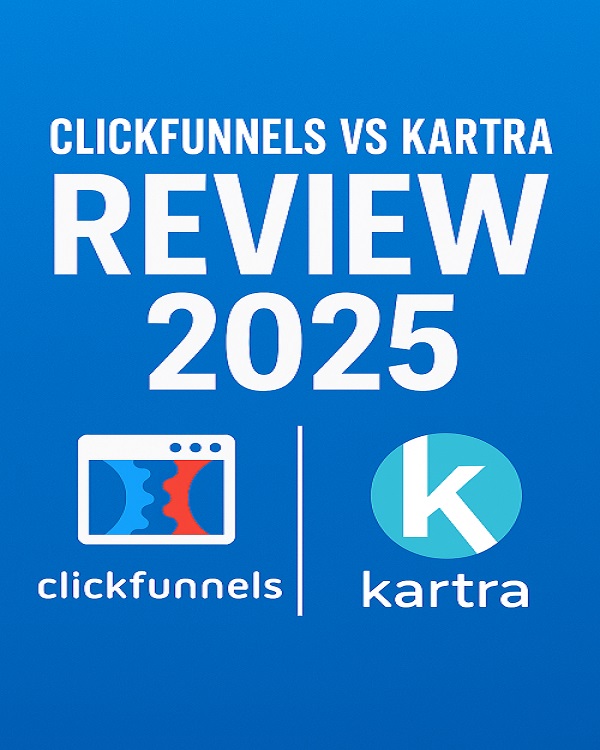Introduction
In today’s digital-first world, social media is the heartbeat of brand visibility and customer engagement. Businesses no longer rely on a single platform to reach their target audience. Instead, they must maintain an active presence across multiple platforms such as Facebook, Instagram, LinkedIn, X (formerly Twitter), TikTok, and YouTube to stay competitive. Managing these platforms simultaneously can be both a blessing and a curse.
The opportunity to connect with a wider audience is huge—but so are the challenges. From maintaining consistency in posting schedules to crafting unique content for each platform, managing multiple accounts demands careful strategy and efficient execution. Without the right plan, businesses risk losing time, diluting their brand identity, and missing valuable engagement opportunities.
This guide will walk you through everything you need to know about efficiently managing multiple social media accounts for your business. You’ll learn practical strategies, tools, and tips to keep your social media organized, effective, and results-driven.

Understanding the Challenges of Managing Multiple Social Media Accounts
Handling multiple social media accounts can feel like juggling knives—one wrong move, and things can get messy fast. The biggest challenge lies in maintaining consistency while catering to each platform’s unique audience and algorithm.
For instance, what performs well on TikTok may flop on LinkedIn. Instagram thrives on visuals, while X favors quick, punchy updates. Businesses often make the mistake of cross-posting the same content everywhere, ignoring the nuances of each platform. This not only reduces engagement but also makes the brand appear robotic and out of touch.
Time management is another major hurdle. Creating, scheduling, engaging, and analyzing across multiple platforms can consume hours daily. Without a structured system, businesses can quickly burn out or miss opportunities to engage with their followers.
Then there’s the challenge of brand voice consistency. When multiple people or teams handle different accounts, maintaining a cohesive tone becomes difficult. A disjointed voice can confuse followers and weaken brand trust.
Lastly, keeping up with ever-changing algorithms and trends adds another layer of complexity. A strategy that works today might fail tomorrow, which is why adaptability is key. Recognizing these challenges early helps you design a management system that’s both efficient and flexible.
Setting Clear Social Media Goals and Strategy
Before diving into the daily grind of managing accounts, it’s vital to know why you’re doing it. Clear goals are the foundation of any successful social media strategy. Are you trying to increase brand awareness, drive website traffic, boost sales, or build a loyal community? Each goal requires a unique approach.
Once goals are defined, align them with each platform’s strengths. For example:
- Facebook is great for community engagement and customer service.
- Instagram is perfect for visual storytelling and brand aesthetics.
- LinkedIn focuses on professional networking and thought leadership.
- TikTok excels in viral marketing and authentic short-form videos.
Having a unified brand voice across these platforms ensures that your audience recognizes you instantly—no matter where they find you. A consistent tone builds trust and strengthens your brand identity.
A strategic plan should also include measurable KPIs (Key Performance Indicators). Whether it’s follower growth, engagement rate, or conversion rate, tracking these numbers helps you measure success and identify areas for improvement. Remember, effective social media management is not about being everywhere—it’s about being strategic everywhere.
Choosing the Right Social Media Platforms for Your Business
Not every business needs to be on every platform. Spreading yourself too thin can harm your productivity and dilute your message. The key is to focus on platforms where your target audience spends the most time.
Start by analyzing your ideal customer demographics. Are they professionals aged 25–45? Then LinkedIn might be your best bet. Are they younger audiences interested in entertainment and lifestyle? TikTok and Instagram could be your top performers.
Here’s a quick breakdown of popular platforms:
| Platform | Best For | Key Content Type |
|---|---|---|
| Community building & customer engagement | Mixed media (text, video, images) | |
| Visual storytelling & brand awareness | Photos, reels, stories | |
| X (Twitter) | Real-time updates & trends | Short-form content |
| B2B marketing & thought leadership | Articles, professional updates | |
| TikTok | Viral marketing & brand personality | Short, creative videos |
| YouTube | Educational & long-form storytelling | Video content |
| Inspiration & lifestyle marketing | Images, infographics |
It’s better to manage three platforms effectively than to mismanage seven. Once you’ve identified your best-performing platforms, double down your efforts there. Tailor your content to fit each channel’s audience behavior while maintaining your brand’s personality.
Creating a Social Media Management Plan
A well-structured plan is your best defense against chaos. It’s the difference between a brand that posts randomly and one that builds meaningful engagement. Start by developing a social media calendar. This helps you organize what to post, when to post, and where to post it.
Your calendar should balance different types of content:
- Promotional posts (products, services, discounts)
- Educational posts (tips, how-tos, industry insights)
- Engaging posts (polls, quizzes, UGC, stories)
A good rule of thumb is the 80/20 principle—80% value-driven content and 20% promotional.
Also, define your posting frequency. Posting too often can overwhelm your audience, while posting too little can make your brand forgettable. Analyze your engagement metrics to find the sweet spot.
Finally, assign responsibilities if you have a team. Who creates content? Who engages with comments? Who tracks analytics? Clear role division prevents overlap and ensures accountability.
With a detailed management plan, your social media efforts become smoother, more consistent, and result-oriented.
Using Social Media Management Tools
Managing several social media accounts manually can be overwhelming. This is where social media management tools become your best allies. They streamline workflows, automate posting, and give you deep insights into what’s working and what’s not.
Tools like Hootsuite, Buffer, Later, and Sprout Social help you manage all your social media platforms from one centralized dashboard. You can schedule posts in advance, monitor engagement, and analyze performance without constantly switching between apps.
For example:
- Hootsuite allows bulk scheduling and real-time analytics.
- Buffer focuses on simplicity and efficiency, perfect for small businesses.
- Later is great for visual planning on Instagram and TikTok.
- Sprout Social provides advanced analytics and collaboration features for teams.
Automation tools help maintain consistency. You can plan a week or even a month of posts in one sitting. This frees you up to focus on engagement and creativity rather than daily scheduling.
However, don’t fall into the trap of full automation. While automation saves time, your audience still wants human interaction. Check in regularly to reply to comments, join trending conversations, and show authenticity.
The real power of these tools lies in their analytics features. You can track metrics like engagement rate, click-throughs, impressions, and audience growth. These insights help you fine-tune your content strategy and optimize future campaigns for better ROI.
Building a Consistent Brand Identity Across All Platforms
Consistency is the cornerstone of effective social media marketing. When people see your content, they should instantly recognize your brand—whether it’s on Instagram, Facebook, or LinkedIn. Consistency builds familiarity, and familiarity builds trust.
Start with visual consistency. Use the same color palette, logo, and design style across all platforms. Canva and Adobe Express are excellent tools to create branded templates for your posts. Keep your profile images, bios, and cover photos aligned with your brand’s message.
Next comes tone and voice. Decide how you want your brand to sound. Is it professional, friendly, humorous, or inspirational? For example, a B2B SaaS company might use a knowledgeable and formal tone on LinkedIn but a slightly relaxed, conversational style on Twitter.
A brand style guide can help maintain this consistency. It should include your logo usage rules, typography, brand colors, hashtags, and tone of voice guidelines. Share it with everyone handling your social media to ensure uniformity across posts.
Lastly, remember that each platform has its own audience and culture. You don’t have to post identical content everywhere. Adapt your message to suit each audience, but always ensure it feels like “you.” For instance, the same blog announcement can be a detailed post on LinkedIn, a short video on TikTok, and an image carousel on Instagram.
Creating and Curating Quality Content
Content is the fuel that keeps your social media engine running. But here’s the catch—posting for the sake of posting won’t cut it. Every piece of content should serve a purpose: to educate, entertain, or engage.
Use the 80/20 rule: 80% of your posts should provide value, and 20% can promote your brand or products. Valuable content builds relationships; promotional content drives sales—but only after trust is established.
Here are some tips for creating standout content:
- Focus on storytelling: People remember stories, not sales pitches. Share customer success stories, behind-the-scenes moments, or personal insights.
- Prioritize visuals: Use high-quality images, videos, and infographics. Visual content consistently performs better than text-only posts.
- Leverage UGC (User-Generated Content): Encourage followers to share photos or reviews using your product. Reposting them not only fills your content calendar but also builds authenticity.
- Collaborate with influencers: Partnering with micro-influencers can expand your reach without massive ad spend.
- Repurpose content: Turn blogs into infographics, podcasts into quote cards, or webinars into YouTube videos. One piece of content can live multiple lives across platforms.
Curation is just as important as creation. Share valuable content from other thought leaders or industry experts. This positions your brand as a reliable source of information, not just self-promotion. Always credit the original creator when curating.
When content is valuable, authentic, and engaging, your followers become loyal advocates who promote your brand naturally.
Scheduling and Automation: The Smart Way to Save Time
When managing multiple social media accounts, consistency is crucial—but it’s also time-consuming. That’s where scheduling and automation come into play. Scheduling allows you to plan and publish posts automatically at optimal times, ensuring your content reaches the right audience even when you’re busy.
Start by identifying the best times to post. Each platform has its own peak engagement hours. For example:
- Facebook: Weekdays between 1 PM and 3 PM
- Instagram: Mornings between 9 AM and 11 AM
- LinkedIn: Tuesday to Thursday during business hours
- TikTok: Evenings and weekends when users are most active
Once you know your timing, use scheduling tools to queue up your posts. Tools like Buffer, Planoly, or Later allow you to visualize your content calendar and see how your posts will appear before they go live.
But automation shouldn’t mean abandoning personalization. Avoid the “set it and forget it” mindset. Check your comments, DMs, and mentions daily to engage with followers in real time. Automation should handle repetitive tasks—not replace genuine connection.
A good approach is semi-automation: schedule your core content but stay flexible to post spontaneously when trends arise or when something newsworthy happens in your industry.
In short, automation gives you time freedom while preserving your brand’s authenticity. When used strategically, it ensures your content is consistent, timely, and impactful—without the burnout.
Engaging with Your Audience Across Platforms
Engagement is the heartbeat of social media. It’s not enough to post regularly—you must interact. Social media is a two-way conversation, and the more you engage, the stronger your community becomes.
Start by responding to comments, messages, and mentions promptly. This shows followers that you value their input. Whether it’s a compliment, a question, or even criticism, always reply professionally and positively.
Use interactive features like polls, Q&A sessions, quizzes, and live streams to make your audience feel involved. For example, host weekly live sessions on Instagram to answer customer questions or use LinkedIn polls to get insights into industry opinions.
Building engagement also means showing personality. Don’t be afraid to use humor, emojis, or behind-the-scenes stories. People connect with people, not faceless brands.
Additionally, monitor your brand mentions using tools like Mention or Brand24. This helps you catch conversations about your brand—even when you’re not tagged. Jumping into these discussions demonstrates attentiveness and authenticity.
Finally, remember that engagement isn’t about vanity metrics like likes or followers. It’s about creating meaningful relationships that drive loyalty and conversions. When followers feel heard and appreciated, they become your brand’s best advocates.
Tracking and Measuring Social Media Performance
You can’t improve what you don’t measure. Tracking your social media performance is the key to understanding what works, what doesn’t, and how to refine your strategy for better results.
Start by defining key metrics that align with your goals. If your goal is brand awareness, focus on reach, impressions, and follower growth. If it’s engagement, track likes, comments, shares, and click-through rates. For conversions, measure leads, sign-ups, or sales generated through social channels.
Use each platform’s built-in analytics tools—like Meta Insights, LinkedIn Analytics, TikTok Analytics, or YouTube Studio—to get real-time data. For a more comprehensive view, tools like Google Analytics, Hootsuite Analytics, or Sprout Social help consolidate performance reports across multiple platforms.
To make your analysis more effective:
- Set benchmarks: Compare your current performance against previous months to identify growth trends.
- Track content types: Identify which types of posts perform best—videos, carousels, quotes, or stories.
- Monitor audience behavior: Understand when your followers are most active and what kind of content sparks interaction.
Regularly reviewing analytics helps you fine-tune your strategy. For instance, if your Instagram reels outperform static posts, focus more on short-form videos. If LinkedIn articles bring the most website traffic, prioritize long-form content there.
Remember, data isn’t just numbers—it tells a story about your audience’s preferences and your brand’s impact. Use it to make informed, strategic decisions that continuously improve your social media performance.
Managing Team Collaboration and Roles
If you’re handling multiple social media accounts as part of a team, collaboration is everything. Without clear communication and defined roles, things can quickly get chaotic—duplicate posts, inconsistent messaging, or missed deadlines can all happen.
Start by assigning specific roles and responsibilities:
- Content creators produce visuals, captions, and videos.
- Social media managers oversee scheduling, strategy, and performance tracking.
- Community managers engage with followers and handle customer service inquiries.
- Graphic designers maintain the brand’s visual identity.
Using collaboration tools like Trello, Asana, or Slack can streamline workflow. These tools allow you to assign tasks, set deadlines, share files, and keep everyone updated in real time.
For larger teams, platforms like Sprout Social or Hootsuite Teams allow multiple users to manage the same accounts without stepping on each other’s toes. You can set permissions so that team members can draft posts that require approval before going live.
Create a communication protocol for your team. Hold weekly check-ins to review performance, upcoming campaigns, and potential challenges. Encourage open feedback—sometimes a simple idea from one team member can spark a viral campaign.
Lastly, document everything. Having a clear workflow and content approval process ensures consistency and accountability. A well-organized team can manage multiple accounts efficiently without losing quality or brand coherence.
Staying Updated with Social Media Trends and Algorithm Changes
The social media landscape evolves at lightning speed. Algorithms change, new platforms emerge, and audience preferences shift constantly. To stay relevant, you must be proactive—not reactive.
Follow reputable industry blogs and influencers like Social Media Examiner, HubSpot, and Neil Patel to stay informed about updates and trends. Subscribe to newsletters or join marketing communities on LinkedIn or Reddit where professionals share real-time insights.
Understanding algorithm changes is especially critical. Platforms prioritize different things over time—like engagement, video content, or meaningful interactions. For example, Instagram recently shifted focus from photos to Reels, while LinkedIn favors posts that encourage discussions.
Adapt your strategy accordingly. Test new content formats, experiment with trending hashtags, and leverage viral challenges that align with your brand personality. However, don’t jump on every trend—choose those that fit your values and audience interests.
You can also use social listening tools like BuzzSumo or Mention to spot emerging trends before they go mainstream. This gives you a competitive edge by allowing you to create timely, relevant content that resonates with your audience.
Staying updated isn’t just about chasing trends—it’s about evolving with your audience. When your brand adapts quickly, it stays visible, engaging, and ahead of the competition.
Common Mistakes to Avoid When Managing Multiple Accounts
Even seasoned marketers can fall into traps when managing several social media accounts. Avoiding these common pitfalls can save you time, money, and frustration.
- Overposting or underposting: Too many posts can overwhelm followers, while too few make your brand forgettable. Find a balanced posting frequency through testing and analytics.
- Ignoring engagement: Posting content and not replying to comments or messages can make your brand seem unapproachable. Social media is about relationships, not broadcasts.
- Inconsistent branding: Using different tones, colors, or messaging across platforms confuses your audience. Stick to your brand style guide.
- Neglecting analytics: Without tracking performance, you’ll never know what’s working. Always review data and adjust strategies accordingly.
- Automating too much: Automation is great for scheduling but should never replace authentic interactions. Keep a human touch in your communications.
- Spreading too thin: Trying to manage every platform can lead to burnout and poor performance. Focus on where your audience truly is.
- Ignoring trends: Refusing to evolve with social media changes can leave your brand behind competitors who adapt faster.
Avoiding these mistakes ensures that your social media management remains efficient, impactful, and authentic—helping your brand grow sustainably over time.
Conclusion
Managing multiple social media accounts for a business is both an art and a science. It requires a blend of organization, creativity, and adaptability. From setting clear goals to using automation tools and staying consistent with your brand identity, each step plays a crucial role in building a strong online presence.
Remember, social media success isn’t about being everywhere—it’s about being effective where it matters most. Focus on your audience, track performance regularly, and evolve with the changing trends.
With the right strategy, tools, and mindset, you can turn social media management from a stressful task into a powerful driver of business growth and customer loyalty.
FAQs
1. How many social media platforms should a business be on?
Ideally, focus on 2–4 platforms where your target audience is most active. Managing fewer accounts well is better than spreading yourself too thin.
2. What’s the best tool for managing multiple social media accounts?
Tools like Hootsuite, Buffer, and Sprout Social are top choices for scheduling, tracking analytics, and managing engagement across platforms.
3. How often should I post on each platform?
It varies, but generally:
- Facebook: 3–5 times per week
- Instagram: 4–6 times per week
- LinkedIn: 2–3 times per week
- X/Twitter: 1–3 times per day
- TikTok: 3–5 times per week
4. How can I make sure my brand voice stays consistent?
Create a brand style guide outlining your tone, colors, fonts, and messaging rules. Share it with your entire team to maintain uniformity.
5. How do I measure the success of my social media efforts?
Track engagement rates, reach, conversions, and audience growth. Use analytics tools to understand performance and refine your content strategy.


